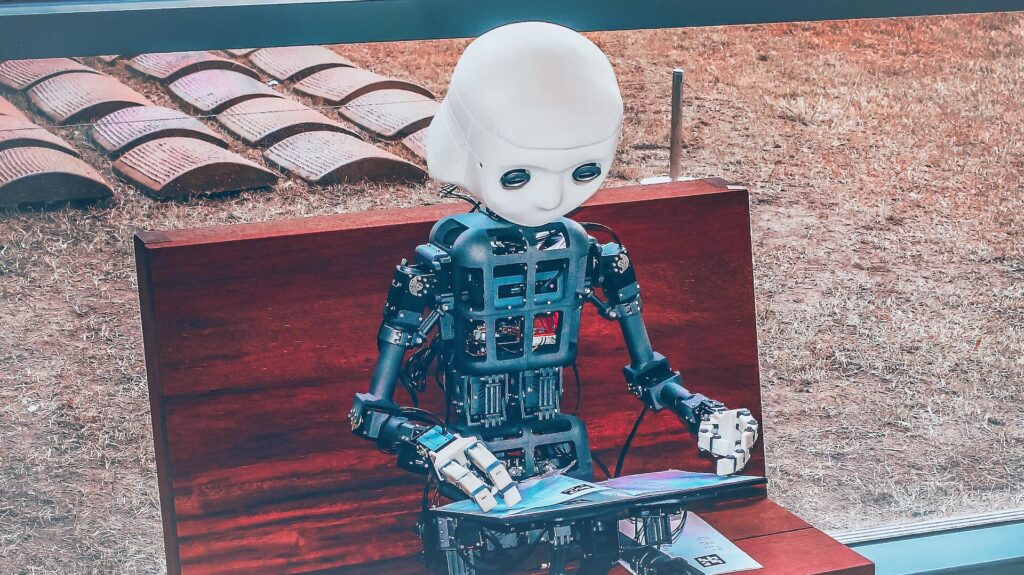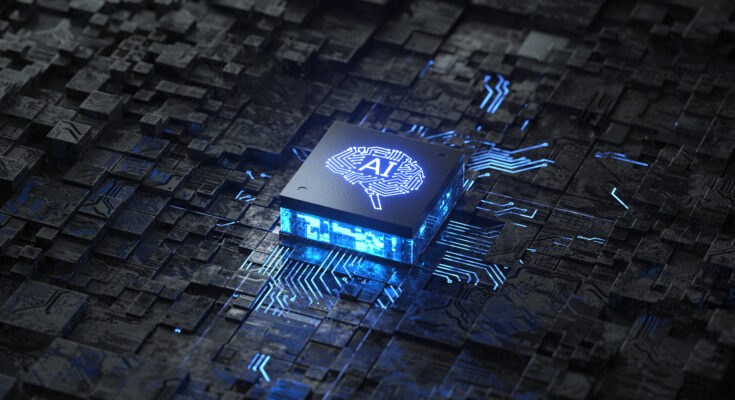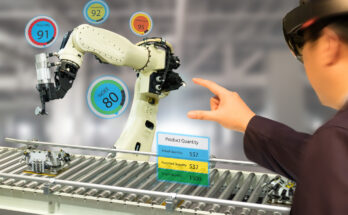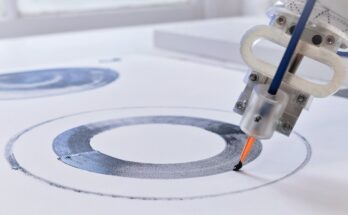Machine learning has become ubiquitous in many industries. People are applying artificial intelligence algorithms to an increasing number of different applications.
Robotics and machine learning have gone together since the very beginning of modern robotics.
The promise of machine learning is that robots can learn from data and make their own decisions about which actions to perform. However, the process of applying it to robotics has traditionally been complex and fraught with challenges.
The RoboDK API can help you overcome and avoid many of these challenges. It provides a more user-friendly way to access advanced robot programming functionality.
With the RoboDK API, machine learning is more accessible to anyone interested in exploring its potential, regardless of your programming experience.
Why Robot Machine Learning is Traditionally Hard
The robotics field is constantly evolving. New technologies arrive every so often and old technologies continue to improve.
Machine learning has been around for decades. People have also been applying it algorithms to robots for decades, but the process is traditionally very hard, especially for new robot programmers. This means that only highly experienced robot programmers can do it.

There are many powerful machine learning programming libraries available in the world, often for free. However, these are often marred by difficulties with poor interoperability, a lack of reliability, and a lack of clear documentation.
In the past, if you wanted to apply a machine learning algorithm to your robotic application, you had to jump through a lot of hoops to get it up and running. You would have to implement a lot of the lower-level programming yourself.
What was missing was a reliable “glue” — a way to combine the power of these third-party machine learning libraries with the movements of the physical robot.
What is the RoboDK API?
The RoboDK API is a set of functions that allow you to interact with RoboDK through a programming interface. You can use this API to create robot programs, generate trajectories, and perform high-level industrial robotic tasks like machining or drilling.
The API is available for Matlab, C++, C#, and Python. It streamlines the process to create robot programs with these highly popular and versatile programming languages. At least one of these languages will be supported by almost any machine-learning library you want to use.
Using the RoboDK API is as simple as loading the RoboDK library from your program. This makes it quick and easy for you to control your robot from your code.
How the API Makes Robot Machine Learning Easier
The RoboDK API makes machine learning easier by providing a simple interface to access the physical robot.
With the API, you can use your existing knowledge of your preferred programming language and easily integrate the robot with the machine learning library of your choice.
For example, imagine you want to integrate the popular Python machine learning library Keras into your robot program — to use neural networks to sort items automatically in a pick and place application.
Without the RoboDK API, you would need to do a lot of programming work to incorporate the Keras library with the coding interface provided by your robot manufacturer.
With the RoboDK API, you can just load the Keras library together with the RoboDK library and the functionality of both libraries is immediately available to you.

5 Benefits of Using the RoboDK API
The conventional approach to robotic machine learning is to spend a lot of time up front getting the programming interfaces to “play nicely together.” This can lead to a lot of headaches, takes a very long time, and usually produces unreliable code.
Compared to the conventional approach, there are various benefits to using the RoboDK API.
Here are 5 benefits:
- User Friendly — The API provides a very user-friendly way to access more advanced robot programming functionality. You benefit from the user-friendly nature of RoboDK itself along with the simple-to-use API interface.
- Advanced Functionality — The basic RoboDK interface provides you with access to a lot of functionalities, but the real power of the software comes when you combine the program with your own code. The API is one of the easiest ways to do this.
- Access to Powerful Libraries — At RoboDK, we know quite a lot about machine learning, but we are not machine learning experts. It makes sense to access your machine learning functionality from libraries created by the leading experts in their fields. With the API, you can use any third-party library, meaning you have access to a huge amount of powerful functionality.
- Well Documented — We try to make our software as easy for you to use as possible. We have clear API documentation that you can use to get to grips with the programming interface for each supported programming language.
- Active Community — We also have an active community of users at RoboDK who can help you to overcome any programming problem you may have. Many third-party machine learning libraries also have active communities if you have questions about their functionalities.
Thanks to these benefits, the RoboDK API is a great tool for machine learning. It can help you save time and effort.

Start Using the RoboDK API Today
The first step to using the RoboDK API is to install RoboDK onto your computer if you haven’t already.
Get familiar with the basic interface and functionality, as well as the API interface.
You can learn all about our API on our documentation pages for Python, C++, and Matlab.
What project would you like to test with the RoboDK API? Tell us in the comments below or join the discussion on LinkedIn, Twitter, Facebook, Instagram, or in the RoboDK Forum.. Also, check out our extensive video collection and subscribe to the RoboDK YouTube Channel




